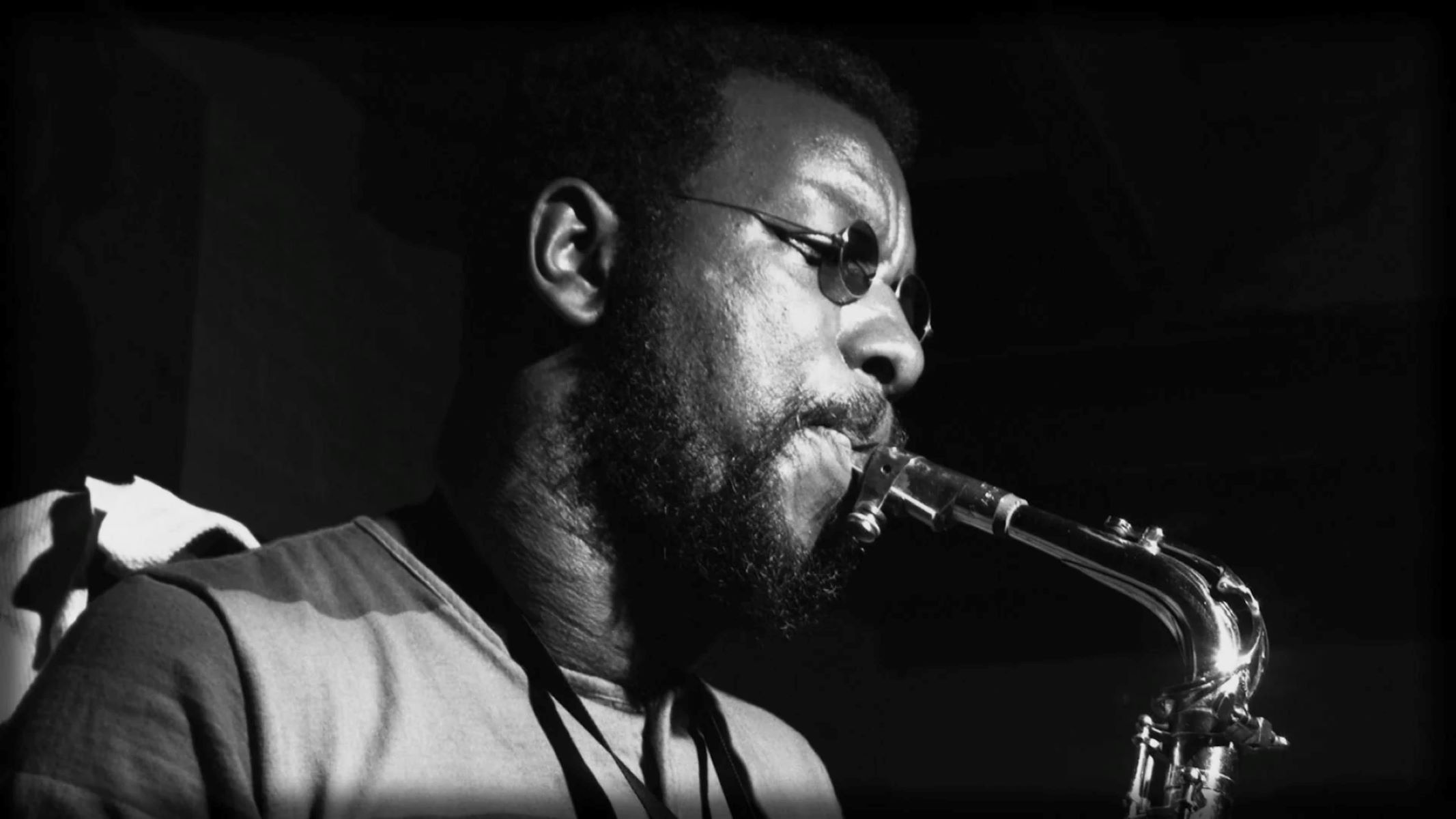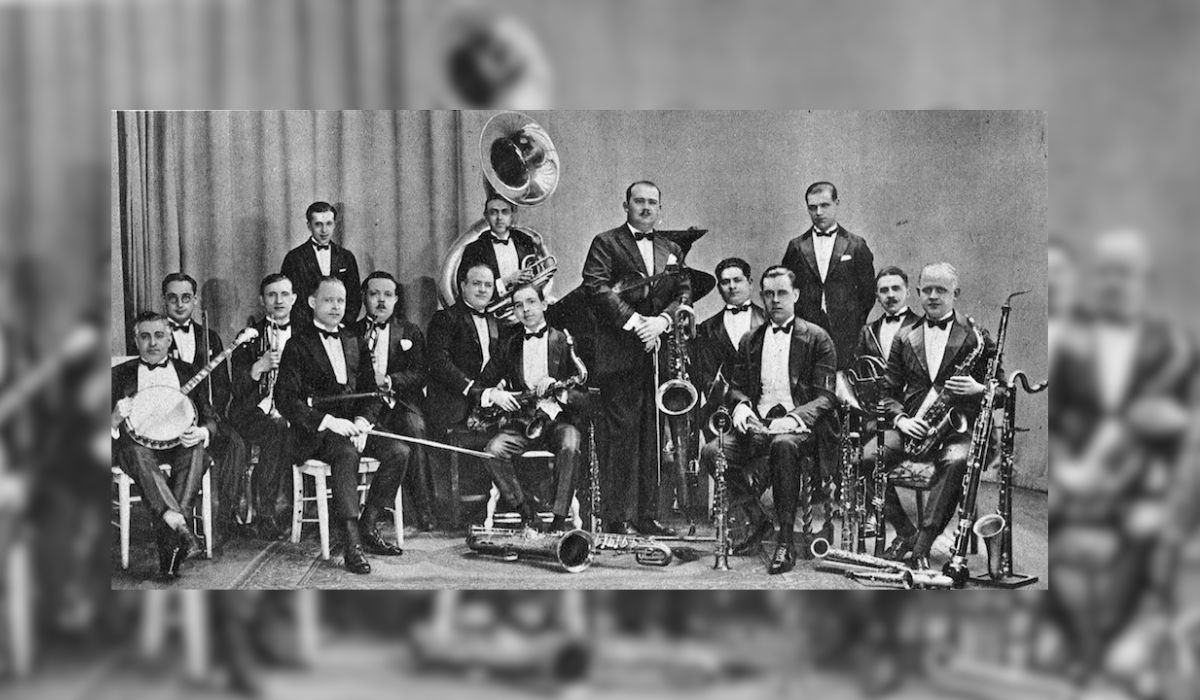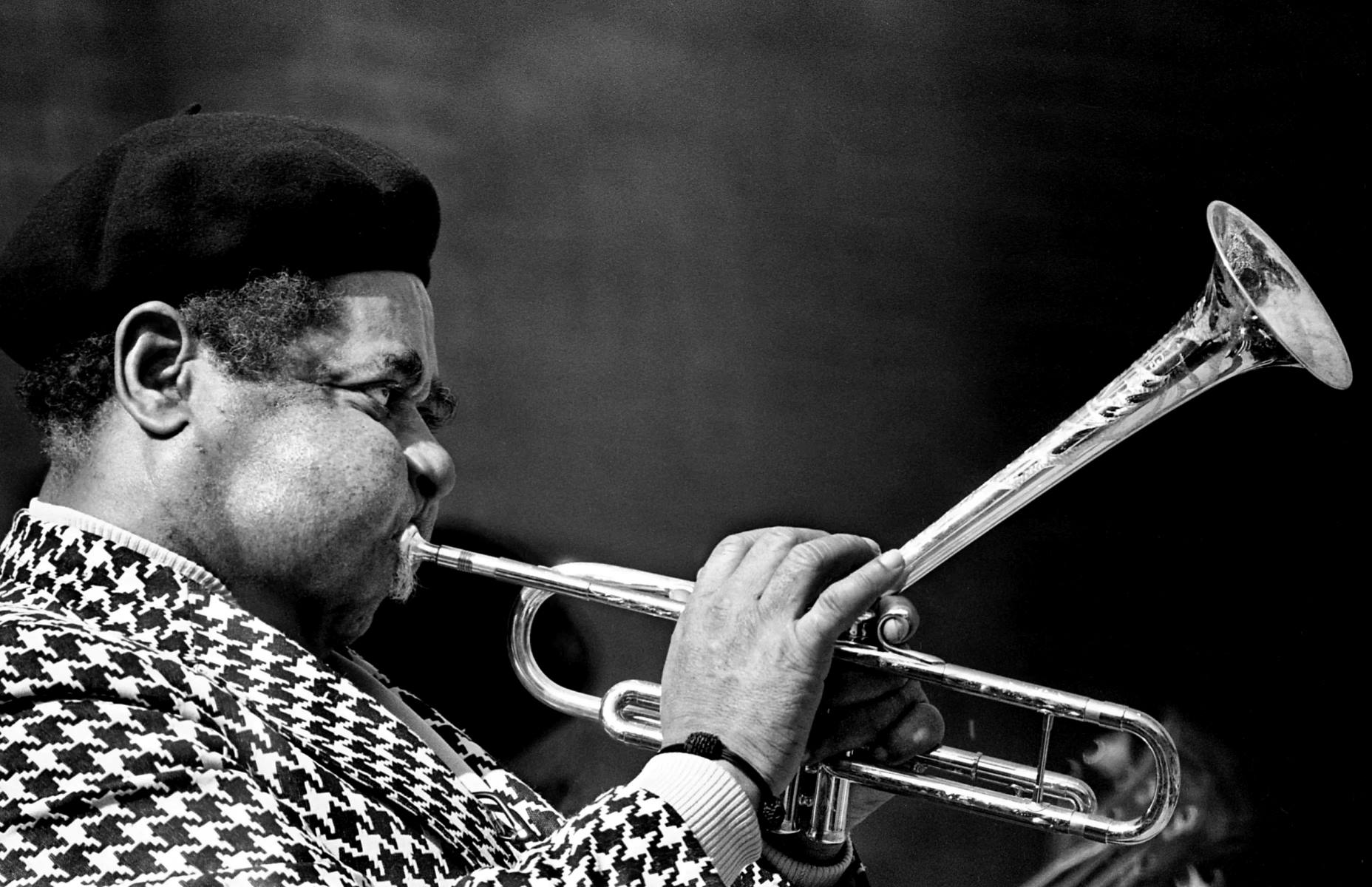Home>Genres>Jazz>Who Were The Principal Musicians Of The Jazz Avant-Garde


Jazz
Who Were The Principal Musicians Of The Jazz Avant-Garde
Modified: January 22, 2024
Discover the groundbreaking musicians who shaped the Jazz Avant-Garde movement. From John Coltrane to Ornette Coleman and beyond, explore the vibrant world of Jazz innovation.
(Many of the links in this article redirect to a specific reviewed product. Your purchase of these products through affiliate links helps to generate commission for AudioLover.com, at no extra cost. Learn more)
Table of Contents
- Introduction
- The Origins of Jazz Avant-Garde
- Characteristics of the Jazz Avant-Garde Movement
- Key Figures in the Jazz Avant-Garde Movement
- Ornette Coleman
- John Coltrane
- Sun Ra
- Albert Ayler
- Cecil Taylor
- Archie Shepp
- Anthony Braxton
- Eric Dolphy
- Don Cherry
- Pharoah Sanders
- Impact and Legacy of the Jazz Avant-Garde Movement
- Conclusion
Introduction
Jazz, with its improvisation, swing, and syncopation, has long been admired for its ability to push musical boundaries. While the genre itself is known for its innovation, the Jazz Avant-Garde movement took experimentation to the next level. Emerging in the late 1950s and continuing through the 1960s and beyond, the Avant-Garde movement in jazz sought to challenge traditional conventions and explore new sonic landscapes.
The Jazz Avant-Garde movement was characterized by its departure from established jazz norms, embracing free improvisation, unconventional compositions, and a disregard for formal structures. It pushed the boundaries of what was considered acceptable in jazz, using dissonance, extended techniques, and unique instrumentation to create a truly avant-garde experience.
This article aims to shed light on the principal musicians who played significant roles in shaping the Jazz Avant-Garde movement. These artists pushed the boundaries of jazz, paved new paths, and left a lasting impact on the genre as a whole.
The Origins of Jazz Avant-Garde
The Jazz Avant-Garde movement emerged as a reaction to the prevailing norms of the jazz scene in the late 1950s. Traditional jazz was rooted in swing and bebop, with a strong focus on structured compositions and virtuosic soloing. However, a group of forward-thinking musicians sought to challenge these conventions and venture into uncharted musical territories.
One significant catalyst for the development of the Jazz Avant-Garde movement was the album “The Shape of Jazz to Come” by Ornette Coleman, released in 1959. Coleman’s unconventional approach to composition and improvisation, characterized by the absence of a predetermined chord structure, sparked controversy and divided the jazz community. His disregard for traditional harmony and melody opened the door for experimentation and inspired other musicians to follow suit.
In addition to Coleman, other musicians such as John Coltrane, Sun Ra, and Albert Ayler were also instrumental in pushing the boundaries of jazz. Coltrane, known for his virtuosic saxophone playing and explorations into modal jazz, delved into the realm of free improvisation as he sought to express himself more authentically. Sun Ra, with his avant-garde big band approach and cosmic themes, brought a unique blend of mythology and experimentation to his music. Ayler, on the other hand, embraced a raw and visceral approach with his intense saxophone playing and emotionally charged compositions.
Together, these artists and others like them laid the groundwork for the Jazz Avant-Garde movement, introducing new ideas and concepts that forever changed the course of jazz. The movement gained further momentum as musicians began to form collectives and experimental groups, such as the Association for the Advancement of Creative Musicians (AACM) in Chicago and the Art Ensemble of Chicago. These collectives provided spaces for artists to collaborate, explore new sounds, and challenge the status quo.
As the 1960s progressed, the Jazz Avant-Garde movement gained both acclaim and criticism. While some embraced the freedom and innovation it brought to jazz, others viewed it as too far removed from the traditional essence of the genre. Nonetheless, the movement left an indelible mark on the evolution of jazz, paving the way for more experimental and genre-defying approaches in the decades to come.
Characteristics of the Jazz Avant-Garde Movement
The Jazz Avant-Garde movement was defined by a set of distinct characteristics that set it apart from traditional jazz and other contemporary movements. These characteristics helped shape the unique sound and spirit of the Avant-Garde movement:
- Free Improvisation: One of the most prominent features of the Jazz Avant-Garde movement was the emphasis on free improvisation. Musicians were no longer confined by predetermined chord progressions or strict structures, allowing them to explore uncharted sonic territories in real time. This sense of freedom and spontaneity led to unpredictable and often boundary-pushing performances.
- Dissonance and Extended Techniques: Avant-Garde musicians embraced dissonance as a means of expressing raw emotion and pushing the boundaries of musical harmony. They also incorporated extended techniques, such as multiphonics, overblowing, and unconventional instrumentations, to create unconventional sounds and textures.
- Unconventional Compositions: The Avant-Garde movement challenged traditional notions of composition by venturing into unexplored territories. Musicians experimented with complex and abstract compositions, often deviating from traditional song structures and exploring unconventional time signatures.
- Exploration of Sound: Avant-Garde artists sought to expand the possibilities of sound within jazz. They utilized various techniques, such as collective improvisation, unconventional instrumentation (including electronics and non-traditional musical instruments), and the incorporation of found sounds, to create new sonic landscapes.
- Social and Political Commentary: Many Avant-Garde musicians used their music as a platform for social and political commentary. They sought to address issues such as racism, social injustice, and inequality through their compositions and performances, aligning the Avant-Garde movement with broader societal movements of the time.
The Jazz Avant-Garde movement represented a departure from the conventions of traditional jazz, embracing experimentation, freedom, and a willingness to challenge the status quo. It blurred the lines between composition and improvisation, harmony and dissonance, structure and chaos, and paved the way for the evolution of jazz as a whole. The movement’s unique characteristics continue to inspire musicians to push the boundaries of jazz and explore new artistic possibilities.
Key Figures in the Jazz Avant-Garde Movement
The Jazz Avant-Garde movement was defined by a group of visionary musicians who fearlessly pushed the boundaries of jazz. Their innovative approaches to composition, improvisation, and performance left an indelible mark on the genre. Here are some of the key figures who played significant roles in shaping the Jazz Avant-Garde movement:
- Ornette Coleman: Widely regarded as one of the pioneers of the Avant-Garde movement, Coleman’s album “The Shape of Jazz to Come” revolutionized the genre. His free-flowing improvisations and abandonment of traditional chord progressions challenged the established norms of jazz.
- John Coltrane: Coltrane’s exploration of modal jazz and his later ventures into the realm of free improvisation had a profound impact on the Avant-Garde movement. His iconic album “A Love Supreme” showcased his ability to balance spirituality and experimentation.
- Sun Ra: Known for his eccentric persona and cosmic musical vision, Sun Ra pushed the boundaries of jazz with his avant-garde big band compositions. His incorporation of Egyptian mythology and futuristic concepts made him an influential figure in the movement.
- Albert Ayler: Ayler’s intense and emotionally charged saxophone playing, coupled with his raw and visceral compositions, made him a leading force in the Avant-Garde movement. His album “Spiritual Unity” remains a watershed moment in the history of jazz.
- Cecil Taylor: Taylor’s avant-garde piano playing combined complex harmonies, angular melodies, and percussive techniques. His innovative approach to rhythm and improvisation pushed the boundaries of jazz and influenced generations of musicians.
- Archie Shepp: Shepp’s powerful tenor saxophone sound and politically charged compositions made him a prominent figure in the Avant-Garde movement. His album “Attica Blues” addressed social issues and showcased his ability to blend tradition and innovation.
- Anthony Braxton: Braxton’s avant-garde approach encompassed a wide range of musical styles and compositions. His use of intricate notation and his mastery of multiple instruments made him a key figure in advancing the boundaries of jazz.
- Eric Dolphy: Dolphy’s virtuosic playing on saxophone, flute, and bass clarinet, combined with his adventurous compositions, showcased his avant-garde sensibilities. His collaboration with John Coltrane and Charles Mingus solidified his place in the movement.
- Don Cherry: Cherry’s innovative use of trumpet and his exploration of global music traditions made him an important figure in the Avant-Garde movement. His collaborations with Ornette Coleman and his contributions to the development of free improvisation were highly influential.
- Pharoah Sanders: Sanders’ powerful and spiritual saxophone playing, showcased on albums like “Karma” and “Thembi,” exemplified the avant-garde aesthetic. His ability to blend avant-garde elements with soulful melodies and textures set him apart.
These musicians, among others, played pivotal roles in shaping the Jazz Avant-Garde movement. Their fearless exploration of new possibilities and their rejection of established norms opened doors for future generations of musicians to further explore and innovate within the Avant-Garde realm.
Ornette Coleman
Ornette Coleman, a renowned American saxophonist and composer, is widely recognized as one of the key figures in the Jazz Avant-Garde movement. His groundbreaking approach to composition and improvisation challenged traditional jazz norms and forever changed the trajectory of the genre.
Coleman’s album “The Shape of Jazz to Come,” released in 1959, marked a significant turning point in jazz history. The album was revolutionary in its abandonment of traditional chord progressions, allowing for free-flowing improvisation without the constraints of predetermined harmonic structures. This departure from conventional jazz forms created a fresh and uncharted sound that epitomized the essence of the Avant-Garde movement.
One of Coleman’s most distinctive contributions to jazz was his concept of “harmolodics.” This unique musical theory emphasized the equal importance of melody, harmony, and rhythm in improvisation. It encouraged musicians to approach their playing holistically, breaking free from the traditional hierarchy of chords and scales. Coleman’s harmolodic approach allowed for a greater sense of freedom and unity in both composition and improvisation.
Coleman’s saxophone playing was characterized by his expressive tone and inventive phrasing. His melodic lines often defied traditional conventions, bending and stretching notes with a sense of urgency and exploration. His compositions, such as “Lonely Woman” and “Peace,” showcased his ability to create emotionally charged melodies that resonated deeply with listeners.
Throughout his career, Coleman collaborated with a range of talented musicians who shared his avant-garde vision. His partnership with trumpeter Don Cherry in the band the “Ornette Coleman Quartet” yielded groundbreaking albums such as “Change of the Century” and “This is Our Music.” The Quartet’s unconventional instrumentation, rhythmic elasticity, and collective improvisation showcased the full potential of the Avant-Garde sound.
Coleman’s impact extended far beyond the realm of jazz. He inspired and influenced generations of musicians, shaping the trajectory of avant-garde music across multiple genres. His visionary contributions to music were recognized with numerous accolades, including a Grammy Lifetime Achievement Award and a Pulitzer Prize for Music.
Ornette Coleman’s fearless pursuit of musical innovation and his relentless commitment to breaking down boundaries made him a true icon of the Jazz Avant-Garde movement. His legacy continues to inspire and challenge musicians to push the limits of creativity and explore new sonic frontiers.
John Coltrane
John Coltrane, widely regarded as one of the most influential musicians in jazz history, made significant contributions to the Jazz Avant-Garde movement through his groundbreaking explorations of modal jazz and his pioneering ventures into free improvisation. His innovative playing and compositions continue to inspire and captivate audiences to this day.
Coltrane’s experimentation with modal jazz, exemplified in his iconic album “Giant Steps,” helped lay the foundation for the Avant-Garde movement. By basing his improvisations on modes rather than traditional chord progressions, Coltrane expanded the harmonic possibilities of jazz and encouraged musicians to explore new melodic structures and tonalities.
As his musical journey progressed, Coltrane delved even further into the realm of avant-garde expression. His later work, including albums like “Ascension” and “Interstellar Space,” showcased his exploration of free improvisation, where he played with a sense of freedom and spontaneity unbound by traditional constraints.
Coltrane’s playing style on the saxophone was characterized by its intensity, technical prowess, and emotional depth. His ability to seamlessly navigate complex harmonic progressions and his passionate, fiery solos captivated audiences and musicians alike. Coltrane’s signature “sheets of sound” approach, where he played rapid successions of notes, created a dense and immersive sonic experience.
Beyond his instrumental mastery, Coltrane’s compositions also reflected his avant-garde sensibilities. He experimented with elongated forms, unconventional time signatures, and non-traditional song structures. Tracks like “A Love Supreme” and “Giant Steps” showcased his ability to blend spirituality, technicality, and artistic expression in a way that resonated deeply with listeners.
Coltrane’s impact on the Jazz Avant-Garde movement extended beyond his own recordings. His collaborations with fellow avant-garde pioneers, such as Ornette Coleman and Albert Ayler, further pushed the boundaries of jazz and inspired a generation of musicians to venture into new sonic territories.
While Coltrane’s life was tragically cut short at the age of 40, his innovative spirit and relentless pursuit of artistic innovation continue to influence musicians across genres. His contributions to the Jazz Avant-Garde movement remain a testament to his enduring legacy as a transformative force in music.
Sun Ra
Sun Ra, born Herman Poole Blount, was an avant-garde jazz composer, bandleader, and pianist who left an indelible mark on the Jazz Avant-Garde movement. Known for his eccentric persona and cosmic musical vision, Sun Ra embraced the avant-garde aesthetic and pushed the boundaries of jazz with his unique blend of mythology, experimentation, and improvisation.
One of Sun Ra’s defining traits was his expansive musical vision, which drew inspiration from a wide range of sources. He incorporated elements of big band jazz, free improvisation, electronic music, and even ancient Egyptian mythology into his compositions and performances. Sun Ra’s music transcended traditional boundaries, transporting listeners to a realm where experimental sounds and cosmic themes converged.
With his ensemble, The Arkestra, Sun Ra established a reputation for their cutting-edge performances and colorful stage presence. The Arkestra featured a diverse array of instruments, including horns, percussion, and electronic instruments, creating a distinct and otherworldly sound. The band’s performances were often characterized by chaotic energy, collective improvisation, and a sense of theatricality that embodied the avant-garde spirit.
Throughout his career, Sun Ra released a prolific number of albums, each showcasing his innovative compositions and arrangements. Albums like “The Heliocentric Worlds of Sun Ra” and “Space Is the Place” exemplified his ability to seamlessly blend intricate melodies, unconventional harmonies, and experimental textures.
Sun Ra’s unique blend of music and mythology created a singular artistic universe that captivated his audience. He often claimed to be a visitor from Saturn, sent to Earth to spread a message of peace and cosmic enlightenment. This cosmic persona and mystique added an extra layer of intrigue to his music, enhancing the avant-garde experience.
Although Sun Ra’s avant-garde approach was initially met with resistance and skepticism from the mainstream jazz community, his influence grew over time. His innovative and daring compositions paved the way for future generations of musicians to explore the outer realms of the jazz genre and beyond, leaving a lasting impact on the evolution of jazz and experimental music.
Sun Ra’s legacy continues to resonate with audiences, inspiring musicians and listeners to embrace the freedom of expression and limitless possibilities within music. His contributions to the Jazz Avant-Garde movement remain a testament to his visionary spirit and his willingness to venture into uncharted sonic territories.
Albert Ayler
Albert Ayler, an influential American saxophonist and composer, played a pivotal role in shaping the Jazz Avant-Garde movement with his raw and visceral approach to music. Ayler’s intense saxophone playing and emotionally charged compositions pushed the boundaries of jazz, ushering in a new era of avant-garde expression.
Ayler’s playing style was characterized by its sheer power and emotional depth. His saxophone solos were marked by piercing screams, multiphonics, and extended techniques, creating a distinct and captivating sound. Ayler’s ability to infuse his playing with a raw, primal energy was unparalleled, leaving an indelible impact on listeners.
One of Ayler’s seminal albums, “Spiritual Unity,” released in 1964, showcased his avant-garde sensibilities and cemented his place in the Jazz Avant-Garde movement. The album featured Ayler’s compositions that were characterized by their simplicity, repetition, and fervor. Tracks like “Ghosts” and “Spirits” captivated audiences with their haunting melodies and raw emotive power.
Ayler’s music embodied a spiritual dimension, drawing inspiration from African American gospel and free jazz traditions. He believed that music had the power to transcend boundaries and connect with a higher spiritual plane. This spiritual essence permeated his compositions and performances, further distinguishing him as a unique voice in the Jazz Avant-Garde movement.
Although Ayler faced criticism and controversy for his avant-garde approach, he garnered a loyal following and influenced numerous musicians in the years that followed. His ability to channel raw emotion and push the boundaries of musical expression inspired generations of avant-garde and free jazz musicians.
Tragically, Ayler’s life was cut short at the age of 34, but his impact on the Jazz Avant-Garde movement continued to reverberate. His unfiltered artistic expression, uncompromising approach to music, and his willingness to embrace the avant-garde left an enduring legacy that continues to inspire and challenge musicians to this day.
Cecil Taylor
Cecil Taylor, a trailblazing American pianist and composer, made significant contributions to the Jazz Avant-Garde movement with his groundbreaking approach to improvisation and composition. Known for his avant-garde piano playing, Taylor’s innovative style pushed the boundaries of jazz and challenged conventional notions of rhythm, harmony, and structure.
Taylor’s playing was characterized by its expressive intensity, complex harmonies, and percussive techniques. He explored the entire range of the piano, using the instrument as a means of both melodic and percussive expression. His agile and virtuosic command of the keys allowed him to create intricate and intricate musical textures.
One of Taylor’s notable achievements was his development of a unique rhythmic concept known as “unit structures.” As opposed to traditional jazz forms, Taylor’s compositions were based on intricate rhythmic patterns and dynamic interplay between the musicians. This approach allowed for individual freedom within a unified structure, resulting in spontaneous and unpredictable performances.
Taylor’s avant-garde compositions were characterized by their complexity, dissonance, and unconventional time signatures. His unorthodox and non-linear approach to composition challenged listeners to engage with music in new and unfamiliar ways. His album “Unit Structures” exemplified his ability to create intricate and dynamic compositions that defied traditional conventions.
Beyond his solo work, Taylor collaborated with numerous musicians, building a reputation for his ability to lead ensembles with a shared commitment to pushing the boundaries of jazz. His collaborations with artists like Archie Shepp and Bill Dixon showcased the collective improvisation and exploratory spirit of the Avant-Garde movement.
Taylor’s impact reached beyond the jazz world, influencing a wide range of experimental and avant-garde artists across various disciplines. His unique approach to music, characterized by its relentless pursuit of innovation and expression, continues to inspire musicians and challenge the boundaries of jazz and improvised music.
Throughout his career, Taylor received numerous accolades and honors, including a MacArthur Fellowship and a National Endowment for the Arts Jazz Masters Fellowship. His fearless and uncompromising dedication to pushing the limits of musical expression solidified his legacy as a pioneering figure in the Jazz Avant-Garde movement.
Archie Shepp
Archie Shepp, an American saxophonist, composer, and activist, played a pivotal role in the Jazz Avant-Garde movement with his powerful playing and politically charged compositions. Known for his uncompromising approach and his integration of blues, gospel, and African musical elements, Shepp’s contributions helped shape the avant-garde sound and its social consciousness.
Shepp’s playing style drew from the expressive traditions of earlier jazz musicians, combining elements of free jazz with a deep-rooted connection to the blues. His saxophone solos were marked by a raw and emotive quality, featuring searing tones and fiery improvisations. Shepp’s ability to seamlessly blend tradition with innovation made him a distinctive voice within the Avant-Garde movement.
One of Shepp’s notable albums, “Fire Music,” released in 1965, is a testament to his commitment to expressing social and political ideas through his music. The album’s compositions address issues of racial inequality and political activism, reflecting the spirit of the era. Shepp’s fusion of intellectual ideas with musical expression resonated with audiences and solidified his place within the Avant-Garde movement.
Shepp’s collaborations with other Avant-Garde musicians, including Cecil Taylor and Don Cherry, amplified his impact within the movement. These collaborations fostered collective improvisation and a shared commitment to pushing the boundaries of jazz expression. Shepp’s ability to blend avant-garde elements with the soulful traditions of African American music set him apart.
Beyond his music, Shepp has also been an outspoken advocate for civil rights and social justice. His activism and dedication to using his platform to address social issues further aligned him with the avant-garde spirit. Shepp’s artistic expression became intertwined with his political activism, making his music a vehicle for change and a catalyst for social awareness.
Over the course of his career, Shepp has released numerous albums, each showcasing his diverse range and commitment to pushing artistic boundaries. His work continues to inspire and challenge musicians, serving as a reminder of the power of music to provoke thought and effect change.
Archie Shepp’s blend of musical innovation, social consciousness, and fearless approach to expression solidified his position as a key figure in the Jazz Avant-Garde movement. His contributions continue to inspire musicians to embrace the avant-garde spirit and use their art as a means of social commentary and transformation.
Anthony Braxton
Anthony Braxton, an American multi-instrumentalist, composer, and educator, is widely recognized for his significant contributions to the Jazz Avant-Garde movement. With his innovative compositions and boundary-pushing approach to improvisation, Braxton has pushed the limits of jazz and expanded the avenues of artistic expression.
Braxton’s avant-garde style draws from a vast array of influences, including free jazz, classical music, and experimental sound. His compositions often feature intricate notation and complex musical structures that challenge the conventions of traditional jazz. Through his music, Braxton breaks free from established norms, encouraging musicians to explore new ways of creating and interpreting music.
One of Braxton’s defining qualities is his ability to master multiple instruments. He has played various saxophones, clarinets, and flutes, using each to express a distinct voice within his compositions. This versatility allows him to bring a unique range of textures and timbres to his music, expanding the possibilities for sonic exploration.
Braxton’s body of work is extensive, encompassing a vast discography of albums, collaborations, and large-scale projects. His compositions often push the boundaries of improvisation, blending elements of structure and freedom. Notable albums such as “For Alto,” where Braxton explores the alto saxophone exclusively, and “Composition 96,” a complex and intricate work for multiple instruments, showcase his intricate and avant-garde musical vision.
Beyond his contributions to the avant-garde sound, Braxton has made significant contributions to jazz education. As an influential educator and mentor, he has inspired countless musicians to embrace the spirit of experimentation and to forge their own artistic paths.
Braxton’s impact on the Avant-Garde movement extends beyond the realm of jazz. His collaborations with artists from different disciplines, including visual artists and dancers, showcase his willingness to blur the boundaries between artistic mediums. By incorporating elements of theater, visual art, and movement into his performances, Braxton creates immersive experiences that challenge the traditional concert setting.
Recognized with numerous prestigious awards, including a MacArthur Fellowship and a Grammy nomination, Braxton’s contributions to the Jazz Avant-Garde movement have solidified his position as an iconic and influential figure. His relentless pursuit of innovation and his commitment to pushing artistic boundaries continue to inspire musicians to embrace the avant-garde spirit and explore new sonic frontiers.
Eric Dolphy
Eric Dolphy, an American jazz musician and composer, made a lasting impact on the Jazz Avant-Garde movement with his innovative approach to playing the saxophone, flute, and bass clarinet. Known for his virtuosic technique and adventurous spirit, Dolphy’s contributions helped redefine the boundaries of jazz and expand the possibilities of improvisation.
Dolphy’s playing style was characterized by its freedom, versatility, and unique sound. His saxophone solos featured a wide range of extended techniques, including multiphonics, overblowing, and unconventional use of intervals. His ability to navigate complex rhythmic patterns and seamless modulation made his improvisations captivating and unpredictable.
One of Dolphy’s landmark albums, “Out to Lunch!,” released in 1964, showcased his avant-garde sensibilities and his approach to composition. Combining elements of free jazz and improvisation with complex structures and intricate melodies, the album is a testament to Dolphy’s ability to blend tradition with innovation.
In addition to his virtuosic saxophone playing, Dolphy was a skilled flutist and bass clarinetist. His proficiency on these instruments allowed him to bring a refreshing dimension to his performances and compositions. Tracks like “Out There” and “Hat and Beard” exemplify Dolphy’s ability to create rich, textural landscapes full of unexpected twists and turns.
Dolphy’s collaborations with iconic jazz musicians, such as Charles Mingus and John Coltrane, further solidified his impact within the Avant-Garde movement. These collaborations resulted in groundbreaking albums, including Mingus’ “Mingus Ah Um” and Coltrane’s “Olé,” where Dolphy’s contributions added a distinct avant-garde edge.
Tragically, Dolphy’s life was cut short at the age of 36, but his influence on the Jazz Avant-Garde movement continues to resonate. His fearless approach to music, his uncompromising dedication to artistic expression, and his willingness to explore the outer realms of jazz have inspired generations of musicians.
Eric Dolphy’s avant-garde contributions to jazz remain highly influential. His commitment to pushing the boundaries of improvisation, his innovations on multiple instruments, and his ability to infuse his playing with emotion and energy solidify his legacy as a key figure in the Jazz Avant-Garde movement.
Don Cherry
Don Cherry, an American jazz trumpeter, composer, and multi-instrumentalist, played a vital role in the Jazz Avant-Garde movement with his innovative approach to music and his integration of global musical traditions. His contributions helped shape the avant-garde sound and highlighted the possibilities of cross-cultural collaboration within jazz.
Cherry’s playing style was characterized by its lyrical beauty, melodic sensibility, and a deep sense of spirituality. His trumpet solos exhibited a distinct warmth and soulfulness, and his use of extended techniques added a unique touch to his improvisations. Cherry’s intuitive approach to rhythm and his ability to blend various musical influences set him apart within the Avant-Garde movement.
One of Cherry’s groundbreaking works was his album “Complete Communion,” released in 1966. The album showcased his prowess as both a composer and a performer. With its mix of tightly arranged sections and open-ended improvisations, “Complete Communion” exemplified Cherry’s ability to create deeply engaging music that was simultaneously avant-garde and accessible.
Cherry’s global musical outlook was instrumental in shaping the Avant-Garde movement. His collaborations with musicians from different cultural backgrounds, including his partnership with the pianist and composer Carla Bley, expanded the sonic palette of jazz. Together, they explored a wide array of world music traditions, incorporating elements of Indian music, African rhythms, and Middle Eastern influences into their compositions and performances.
Beyond his work as a trumpeter, Cherry was also a skilled player of the pocket trumpet, the cornet, and various flutes. His versatility allowed him to explore unique sonic possibilities and further experiment with different timbres and tonalities.
Cherry’s impact on the Jazz Avant-Garde movement extends beyond his own recordings. He inspired countless musicians with his adventurous spirit, encouraging them to push the boundaries of genre and embrace a global perspective in their musical endeavors.
Although Cherry’s contributions to the Avant-Garde movement were often overshadowed by his more mainstream successes, his influence cannot be overstated. His willingness to bridge musical traditions, his radiant improvisations, and his dedication to musical exploration continue to inspire musicians seeking to create boundary-defying and culturally diverse music.
Don Cherry’s legacy as a visionary jazz musician and a central figure in the Jazz Avant-Garde movement remains intact. His ability to fuse diverse influences and his contributions to cross-cultural musical dialogue solidify his place among the avant-garde greats.
Pharoah Sanders
Pharoah Sanders, an American saxophonist and composer, played an integral role in the Jazz Avant-Garde movement with his distinctive and spiritually charged approach to music. Known for his powerful and emotive saxophone playing, Sanders’s contributions helped shape the avant-garde sound and left an indelible mark on the world of jazz.
Sanders’s playing style was characterized by its intensity, passion, and spiritual depth. His saxophone solos were marked by soaring melodies, gut-wrenching cries, and extended techniques such as multiphonics and overtones. Sanders’s ability to channel raw emotion through his instrument made his performances captivating and left a lasting impact on listeners.
One of Sanders’s most iconic albums, “Karma,” released in 1969, exemplified his avant-garde prowess. The album showcased his ability to blend free improvisation with mystical and spiritual elements. Tracks like “The Creator Has a Master Plan” demonstrated his ability to create expansive musical journeys that were both transcendental and exploratory.
Sanders’s collaborations with jazz legend John Coltrane further solidified his place within the Avant-Garde movement. As a member of Coltrane’s band, Sanders’s contributions added depth and intensity to Coltrane’s innovative explorations. Their collaborations, notably on the album “Live in Japan,” showcased Sanders’s virtuosity and his ability to push the boundaries of collective improvisation.
Beyond his collaborations, Sanders embarked on a successful solo career, releasing numerous albums that further established his unique voice within the Avant-Garde movement. His albums “Thembi” and “Black Unity” displayed his music’s combination of free jazz, African rhythms, and spiritual undertones.
Sanders’s impact goes beyond the music itself. His ability to communicate a profound sense of spirituality through his playing, drawing from a variety of religious and cultural traditions, made him a revered figure in the jazz community. His dedication to using music as a means of healing and transcendence added an extra layer of depth to the Avant-Garde movement.
The influence of Pharoah Sanders can be heard in the work of countless musicians who were inspired by his fearless approach and innovative spirit. His ability to combine avant-garde expression with soulful melodies and textures set him apart within the movement.
Pharoah Sanders’s legacy as a visionary musician and a vital contributor to the Jazz Avant-Garde movement endures. His dedication to pushing musical boundaries, his spiritual depth, and his dynamic saxophone playing continue to inspire and captivate audiences around the world.
Impact and Legacy of the Jazz Avant-Garde Movement
The Jazz Avant-Garde movement has had a profound and lasting impact on the evolution of jazz and experimental music. Through their innovative approaches to composition, improvisation, and performance, the musicians of the Avant-Garde movement pushed the boundaries of jazz and opened up new avenues for artistic expression.
One of the significant impacts of the Avant-Garde movement was the breaking down of traditional musical conventions. The movement challenged established norms of harmony, melody, structure, and improvisation, encouraging musicians to explore new sounds, techniques, and forms. This departure from tradition allowed for greater freedom and expression, paving the way for jazz to evolve as a more diverse and inclusive art form.
Furthermore, the Avant-Garde movement expanded the sonic palette of jazz. Musicians incorporated extended techniques, unconventional instruments, and experimental sounds into their music, fostering a more expansive and diverse range of sonic possibilities. This sonic exploration influenced not only the jazz community but also artists from various genres, contributing to the broader landscape of experimental and avant-garde music.
The Avant-Garde movement also had a profound influence on the socio-political dimensions of jazz. Many artists within the movement used their music as a platform for social commentary, addressing issues such as civil rights, racial inequality, and political activism. Their compositions and performances served as a voice for marginalized communities and challenged the status quo, aligning the Avant-Garde movement with broader societal movements of the time.
The legacy of the Jazz Avant-Garde movement continues to reverberate through contemporary jazz and beyond. Its impact can be seen in the work of musicians who incorporate avant-garde elements into their compositions and improvisations, either as a nod to the past or as a means of pushing the boundaries of jazz further.
Furthermore, the Avant-Garde movement inspired the growth of experimental and avant-garde music scenes, where artists continue to explore new sonic territories, challenge established norms, and push the boundaries of artistic expression. The Avant-Garde movement laid the foundation for these artists to develop their unique voices and contribute to the ongoing evolution of experimental music.
Overall, the Jazz Avant-Garde movement left an indelible mark on the history of jazz. Its innovative spirit, fearless exploration, and dedication to pushing artistic boundaries continue to inspire musicians to take risks, challenge conventions, and embrace the freedom of expression. The movement’s impact on jazz and experimental music remains a testament to the enduring power of artistic innovation and the importance of pushing the boundaries of creativity.
Conclusion
The Jazz Avant-Garde movement stands as a bold and transformative chapter in the history of jazz. Through their fearless exploration, the musicians of the Avant-Garde movement challenged traditional conventions, expanded the sonic palette of jazz, and pushed the boundaries of artistic expression.
The movement’s legacy is evident in the continued influence on jazz and experimental music. Avant-Garde artists shattered the limitations of traditional structures, freeing musicians to embrace free improvisation, dissonance, and unconventional compositions. Their innovative approaches to music paved the way for future generations to venture into uncharted sonic territories.
The impact of the Avant-Garde movement extends beyond the music itself. Artists used their platform to address social and political issues, aligning their music with broader movements for social justice and equality. By infusing their compositions with social commentary, the Avant-Garde musicians demonstrated the power of artistic expression to effect change and bring awareness to society’s challenges.
Today, the influence of the Jazz Avant-Garde movement can be heard in diverse musical genres. Musicians continue to draw inspiration from the Avant-Garde’s fearlessness, innovation, and commitment to artistic exploration. The movement’s emphasis on individual expression, experimentation, and pushing boundaries serves as a guiding force for musicians seeking to push the limits of creativity in their own work.
In conclusion, the Jazz Avant-Garde movement revolutionized jazz by challenging established norms and expanding the possibilities of artistic expression. Its impact continues to resonate, inspiring musicians to embrace the freedom of improvisation, explore new sonic frontiers, and address social issues through their music. The Avant-Garde movement remains a testament to the everlasting power of artistic innovation and the limitless potential of jazz as a transformative and boundary-defying genre.











